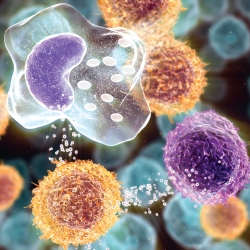
With Texas pouring millions of dollars into developing adult stem-cell treatments, doctors there are already injecting paying customers with unproven preparations, supplied by an ambitious new company.
The US Food and Drug Administration (FDA) has not approved any such stem-cell treatment for routine clinical use, although it does sanction them for patients enrolled in registered clinical trials. Some advocates of the treatments argue, however, that preparations based on a patient’s own cells should not be classed as drugs, and should not therefore fall under the FDA’s jurisdiction.
There are certainly plenty of people eager to have the treatments. Texas governor Rick Perry, for instance, has had stem-cell injections to treat a back complaint and has supported legislation to help create banks to store patients’ harvested stem cells.
One company that has benefited from this buoyant climate is Celltex Therapeutics, which “multiplies and banks” stem cells derived from people’s abdominal fat, according to chairman and chief executive David Eller. Its facility in Sugar Land, just outside Houston, opened in December 2011 and houses the largest stem-cell bank in the United States.
Celltex was founded by Eller and Stanley Jones, the orthopaedic surgeon who performed Perry’s procedure, and it uses technology licensed from RNL Bio in Seoul. Because clinical use of adult-stem-cell treatments are illegal in South Korea, RNL has since 2006 sent more than 10,000 patients to clinics in Japan and China to receive injections.
Celltex says that although it processes and banks cells, it does not carry out stem-cell injections. It declined to answer Nature’s questions about whether its cells have been used in patients. But there is evidence that the company is involved in the clinical use of the cells on US soil, which the FDA has viewed as illegal in other cases.
